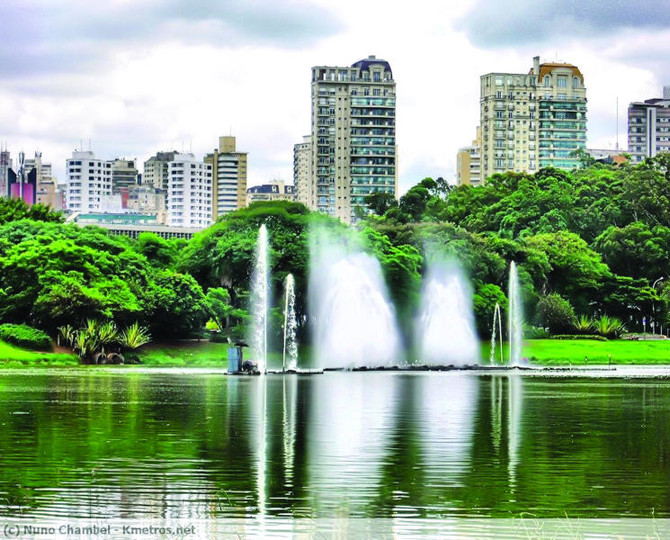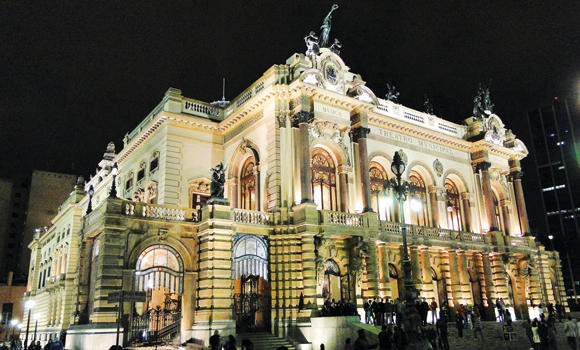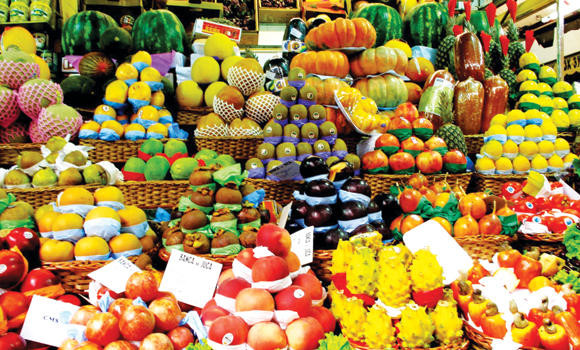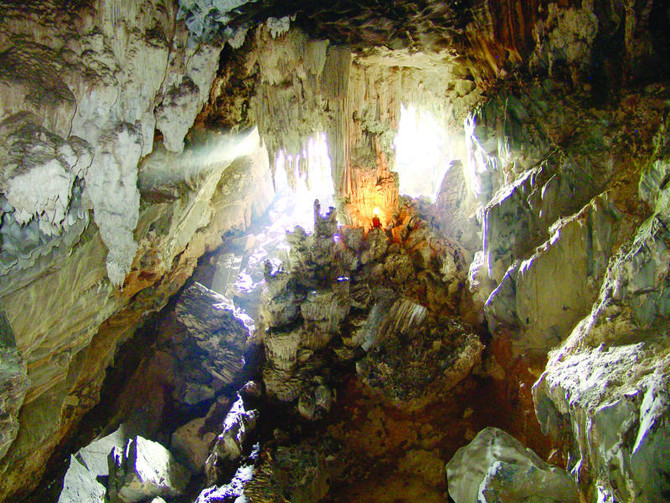São Paulo is a beautiful and vibrant city that is among the world’s most populated cities. It is Brazil’s financial center and is home to many cultural institutions and a rich architectural tradition. As such, São Paulo is one of the country’s and indeed, the continent’s most significant areas. In fact, it contributes over a third of Brazil’s Gross Domestic Product.
The city enjoys a tropical to subtropical climate, depending on the altitude. It is generally warm and mild all year round, with some areas experiencing chilly night-time lows.
São Paulo’s iconic buildings range from the 1929 Edifício Martinelli skyscraper and the neo-Gothic Metropolitan Cathedral to modernist architect Oscar Niemeyer’s curvy Edifício Copan.
We looked up the best places to visit in this beautiful city:
1) Mercado Municipal: It is the biggest market in Sao Paulo. This covered market is a Belle Époque confection of stained glass and a series of vast domes. Inside is a delightful market specializing in fresh produce and dried goods. It’s also a great place to sample a couple of classic home-baked delights, smoked meats and cold cuts as well as pastries. You will find a variety of counters with different types of cheese, vegetables, fruits, cereals, spices and of course fish, one of the specialties of the market.This huge construction is close to the Pinacoteca de São Paulo and the Luz subway station. Opened in 1933, the Mercadão was built with a mixture of architectural styles making it look even more beautiful. Because of the time damage, the whole building went through a reform in 2004 to recover its originals details. Along with the work, they built its second floor that is full of food stands. From then on, it became a meeting point for Sao Paulo’s inhabitants.
2) Museu de Arte Sacra (Museum of Sacred Art): The Museum is home to a lovely collection of colonial art and artifacts located within a baroque monastery built in the 18th century. Some 11,000 items, including statues, pictures, retables and furniture await visitors. The museum is best of its kind in Brazil, this museum includes works by renowned 18th-century sculptor Antônio Aleijadinho, along with some 200 other ecclesiastical works from the 17th to the 20th centuries. The museum is housed in the 18th-century Luz monastery, which is one of São Paulo’s best-preserved buildings of the period. You must checkout the jewel room containing solid gold religious artifacts embedded with jewels and gorgeous pieces of silver.
3) Parque do Ibirapuera: It is a major urban park in São Paulo; it has a large area for leisure, jogging, cycling and walking, as well as a vivid cultural scene with museums and a music hall. This park is the biggest green space in central São Paulo. Parque do Ibirapuera makes a great escape from the noise of the city. It is a perfect place for a family picnic and a small family wedding with the most beautiful view. The urban park was opened in 1954 to honor the city’s 400th anniversary, the park was designed by renowned landscape architect Roberto Burle Marx. A series of landmark buildings in the park are the work of modernist master Oscar Niemeyer; most of them are linked by a long and distinctively serpentine covered walkway.
4) Jardim Zoológico: This is the largest zoo in Brazil. With 824,529 square meter of space in what was originally the Atlantic Forest, the zoo is located in the south of the city of São Paulo. It’s home to some 3,000 animal species. As well as exhibiting caged animals, the zoo offers safari excursions and an adventurous 45-minute ride through large, fenced areas where animals are allowed to roam with relative freedom.
5) Benespa: Also known as the Altino Arantes Building, it is an important skyscraper located in the heart of São Paulo. The building offers the best panoramic views. At 161 meter, this high skyscraper is Brazil’s version of the Empire State Building. It was completed in 1939.
6) São Paulo Museum of Art: It is well known for its headquarters, a 1968 concrete and glass structure. It is considered a landmark of the city and the main symbol of modern Brazilian architecture.The museum is internationally recognized for its collection of European art, considered the finest in Latin America and all Southern Hemisphere. It also houses an emphatic assemblage of Brazilian art, prints and drawings, as well as smaller collections of African and Asian art, antiquities, decorative art and others, amounting to more than 8,000 pieces. The museum also has one of the largest art libraries in the country. The whole collection has been named by Brazil’s Institute of History and Art to the Brazilian National Heritage list.
7) Alto Ribeira State and Tourist Park: Created in 1958, it is one of the oldest parks in the state of São Paulo. The presence of caves in conjunction with the Atlantic Forest, encourages the visitor to know a variety of environments, go through some rivers, swim in the waterfalls outside and inside the caves. Its wide range of itineraries may please the most demanding of both beginners and veterans. It has four main areas or units for tourist visitation: Nucleo Santana, Ouro Grosso, Casa de Pedra and Caboclos. The most frequented are Santana and Ouro Grosso.
8) Hopi Hari Theme Park: It is considered the second largest amusement park in Brazil. The theme park is divided into five areas: Kaminda Mundi, Mistieri, Infantasia, Aribabiba and Wild West. Hopi Hari offers many rides, from simple and child-friendly rides to fast and furious rides for the adrenaline junkies. Various foods from snacks to a la carte are available within the park. You will enjoy the Montezum, the largest wooden roller coaster in Latin América; the “La Tour Eiffel,” Intamin Giant Drop; in Katapul (Thunderlooper or King Kobra), a loop that goes back and forth; in Vurang, a roller coaster in the dark, Intamin indoor; Evolution; the River Rapids “Rio Bravo” and other attractions.
9) Luz Station: It is the historical railway station of Estação da Luz, an expensive Victorian train station built in 1901 and offering direct metro access and a museum. This historical site has most of the old architectural station preserved while it is actually functioning as a local railway station. One can access and visit without having to board any train so it can be considered a free attraction. You can enter the station and see details inside just by spending $100 because it is adjacent to Pinacoteca Museum and Portuguese Language Museum, a great option to visit if you are at one of these places. Finally, during rush hours the station can get quite packed so best times to visit are weekends and late mornings and early afternoons.
10) Municipal Theatre of São Paulo: It is a theater in São Paulo and is one of the landmarks of the city, significant both for its architectural value as well as for its historical importance. Beautiful graffiti elements surround the building and the venue has beautiful architecture and good acoustic. The opera performance is high quality with excellent singing and orchestra. It was built in the early 1900s in the style of Paris’ Palais Garnier. Its heavily ornamented façade seems to combine every architectural style imaginable, from baroque to art nouveau, and its interior is clad in gold and marble.
11) Aquário de São Paulo: It is the largest aquarium in Latin America. It opened in 2006, with an area of 15,000 sq. meter and 2 million liters of water. The aquarium has approximately 3,000 specimens of about 300 species of animals. There are not only fishes, but also mammals, such as kangaroos, polar bears and seals. The polar bear’s habitat is a must see. It was reported that the bears here were rescued from terrible living conditions in Russia and are now having a much higher standard of living.
—
Email: [email protected]
The hidden gems of São Paulo
The hidden gems of São Paulo

Millie Bobby Brown spotted in new advert for Yas Island in Abu Dhabi

DUBAI: British actress Millie Bobby Brown is starring in a new advert for entertainment destination Yas Island in Abu Dhabi.
With a nod to “Stranger Things,” Brown is seen buckling into Formula Rossa, the world’s fastest rollercoaster alongside her husband Jake Bongiovi.
Moments before launch, she asks him about the speed, and when he replies “240 km an hour,” she makes a quick exit. The advert continues with lights flickering and Brown and other characters glitching with effects reminiscent of the hit Netflix series.
Created by the Duffer Brothers, “Stranger Things” debuted in 2016 and quickly became one of Netflix’s most popular series, with its fourth season amassing more than 140.7 million views globally.
The series has garnered over 70 awards worldwide, including Emmys and the Screen Actors Guild Award for Outstanding Performance by an Ensemble in a Drama Series.
Brown was announced as a brand ambassador for Yas Island in November.
The Netflix show’s final season five is being released in stages. The first four episodes streamed on Nov. 26, and will be followed by three on Dec. 25, and the finale on New Year’s Eve.
In her first promotional clip for Yas Island, she is seen back in the Byers’ living room, made famous on the show, framed by the glow of the iconic alphabet wall that is a key element of the “Stranger Things” storyline.
In the video, she jokes about taking a holiday after five seasons of the show as the lights begin to flicker, illuminating one by one until they spell out “YAS.”
Brown is the latest celebrity to take on a role with Yas Island, following Ryan Reynolds, Kevin Hart and Jason Momoa, who were all “Chief Island Officers.”
The actors starred in a series of amusing adverts for the entertainment destination, including Reynolds appearing to skydive over Abu Dhabi.
















